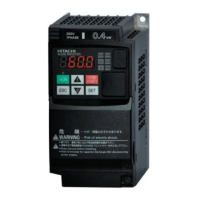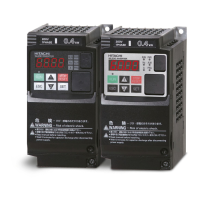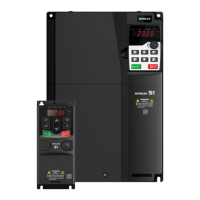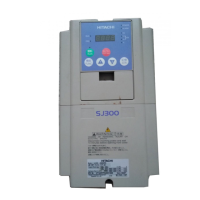*1) The capacity code and voltage class are indicated on the model name. Others are omitted.
*2) Some models require current derating depending on the carrier frequency setting and ambient temperature. For
details, refer to "17.3 Current Derating". (Please contact us for models not described.)
*3) The rated input current is the value at the rated output current. The value changes according to the impedance
on the power supply side (wiring, breaker, input reactor option, etc.). The input current on the specification label
indicates the UL-certified current.
*4) Compliance with the Low Voltage Directive (LVD) is as follows. -Pollution degree 2, -Overvoltage category 3
*5) Power supply capacity is the value of the rated output current at 220 V. The value changes according to the
impedance on the power supply side (wiring, breaker, input reactor option, etc.).
*6) The setting range of "Carrier Frequency [b083]" is limited according to "Load Specification Selection [b049]". It is
recommended to set the carrier frequency setting equal or greater than the (maximum output frequency × 10)
Hz.
*7) The value is specified for the Hitachi standard motor controlled by the sensorless vector control at ND rating.
Torque characteristics may vary depending on the control mode and the motor used.
*8) The braking torque during regeneration is the average deceleration torque for the shortest deceleration (stopping
from 50 Hz). It is not continuous regenerative torque by the external force. The braking torque varies depending
on the loss of the motor. This value decreases when operating beyond the base frequency.

